How to install mysql5.7 on centos7 using rpm
1. Download 4 rpm packages
mysql-community-client-5.7.26-1.el7.x86_64.rpm mysql-community-common-5.7.26-1.el7.x86_64.rpm mysql-community-libs-5.7.26-1.el7.x86_64.rpm mysql-community-server-5.7.26-1.el7.x86_64.rpm
If you want to use Thunder to download, you must first find the corresponding rpm download path
First open the mysql official website in the browser:
In the opened interface, press f12 on the keyboard to open the developer tools. After opening, it is as follows:
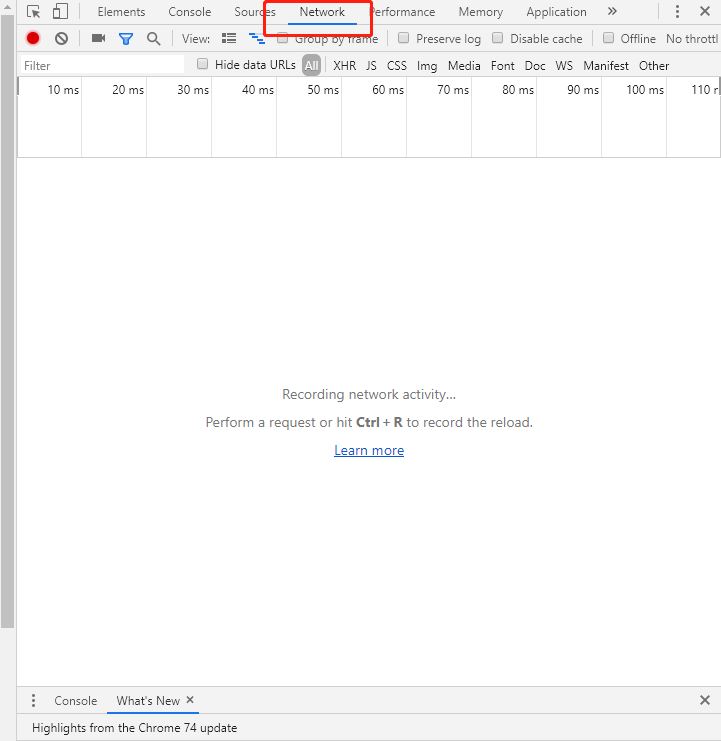
Find the corresponding version on the official website:
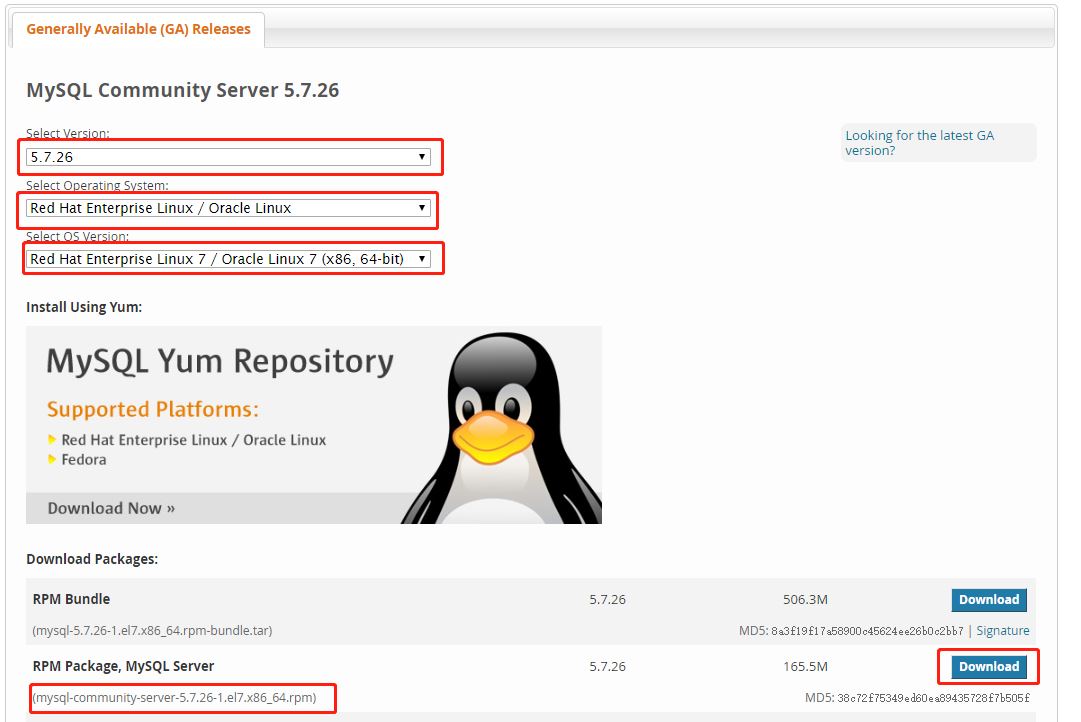
Click to download directly:

You can find the download path in the developer tools:
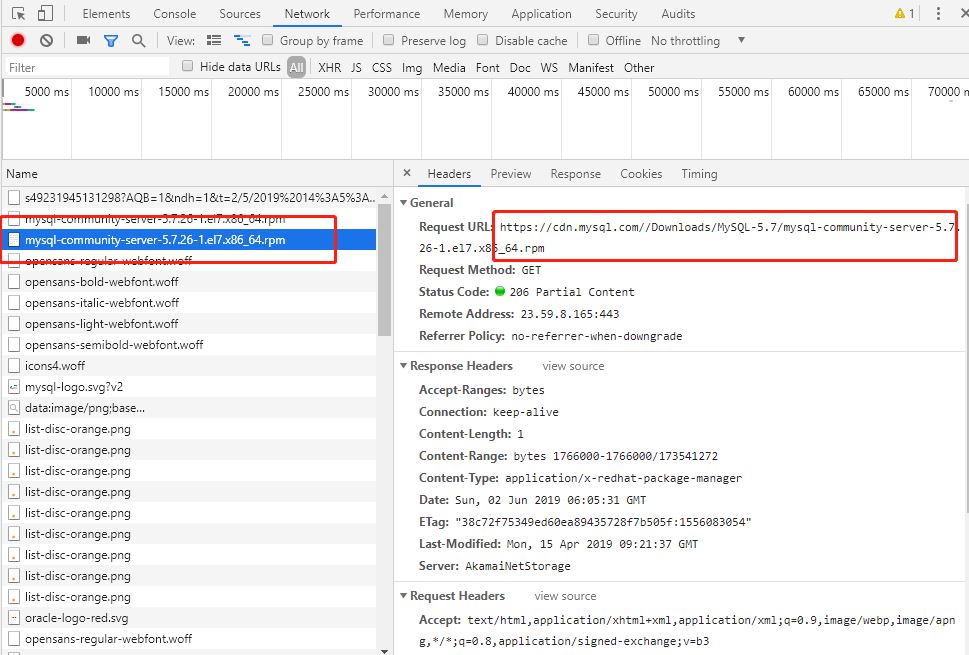
The paths of four rpm packages of myql5.7 are given below. You can directly open Thunder and fill in the download path to download. You can use the same method for other versions:
https://cdn. mysql.com//downloads/mysql-5.7/mysql-community-server-5.7.26-1.el7.x86_64.rpm
https://cdn.mysql.com//downloads/mysql-5.7 /mysql-community-client-5.7.26-1.el7.x86_64.rpm
https://cdn.mysql.com//downloads/mysql-5.7/mysql-community-common-5.7.26 -1.el7.x86_64.rpm
https://cdn.mysql.com//downloads/mysql-5.7/mysql-community-libs-5.7.26-1.el7.x86_64.rpm
2. Upload rpm to linux
The xshell I use here does not have xftp installed
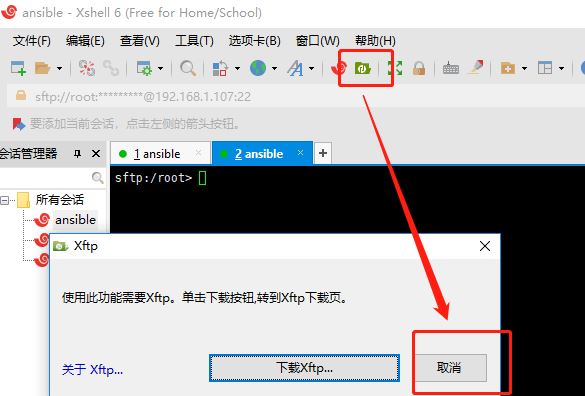
Enter put in sftp command, select the downloaded rpm package to upload:
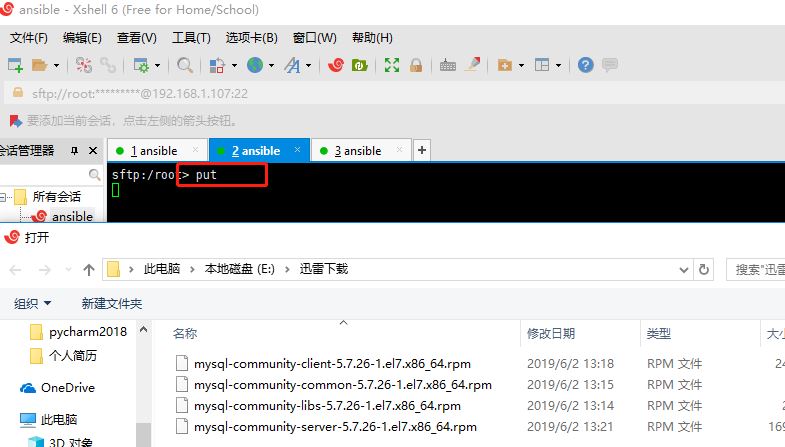
3. Install
The rpm package that has been uploaded is as follows:

By rpm -ivhmysql-community-****-5.7.26-1.el7.x86_64.rpm--force --nodeps Installation, *** means common, libs, client, server
Installation sequence common-->libs-->client-->server
If there is no --force -- A warning will appear in nodeps:
warning: mysql-community-common-5.7.26-1.el7.x86_64.rpm: header v3 dsa/sha1 signature, key id 5072e1f5: nokey
4. Configuration
Start the mysql service:
[root@localhost ~]# service mysqld start redirecting to /bin/systemctl start mysqld.service [root@localhost ~]#
Find the initial password:
[root@localhost ~]# cat /var/log/mysqld.log |grep password 2019-06-02t08:39:38.448115z 1 [note] a temporary password is generated for root@localhost: dlzmcrv?s2q) 2019-06-02t08:40:41.870130z 2 [note] access denied for user 'root'@'localhost' (using password: no)
Log in to mysql:
[root@localhost ~]# mysql -u root -p
The password is the dlzmcrv?s2q found above)
Modify root password:
mysql> alter user 'root'@'localhost' identified by 'newpasswd';
Allow remote connections:
mysql> grant all privileges on *.* to 'root'@'%' identified by 'newpasswd' with grant option; mysql> flush peivleges;
Turn off the firewall:
[root@localhost ~]# systemctl stop firewalld.service
The above is the detailed content of How to install mysql5.7 on centos7 using rpm. For more information, please follow other related articles on the PHP Chinese website!

Hot AI Tools

Undresser.AI Undress
AI-powered app for creating realistic nude photos

AI Clothes Remover
Online AI tool for removing clothes from photos.

Undress AI Tool
Undress images for free

Clothoff.io
AI clothes remover

Video Face Swap
Swap faces in any video effortlessly with our completely free AI face swap tool!

Hot Article

Hot Tools

Notepad++7.3.1
Easy-to-use and free code editor

SublimeText3 Chinese version
Chinese version, very easy to use

Zend Studio 13.0.1
Powerful PHP integrated development environment

Dreamweaver CS6
Visual web development tools

SublimeText3 Mac version
God-level code editing software (SublimeText3)

Hot Topics
 How to open phpmyadmin
Apr 10, 2025 pm 10:51 PM
How to open phpmyadmin
Apr 10, 2025 pm 10:51 PM
You can open phpMyAdmin through the following steps: 1. Log in to the website control panel; 2. Find and click the phpMyAdmin icon; 3. Enter MySQL credentials; 4. Click "Login".
 MySQL: An Introduction to the World's Most Popular Database
Apr 12, 2025 am 12:18 AM
MySQL: An Introduction to the World's Most Popular Database
Apr 12, 2025 am 12:18 AM
MySQL is an open source relational database management system, mainly used to store and retrieve data quickly and reliably. Its working principle includes client requests, query resolution, execution of queries and return results. Examples of usage include creating tables, inserting and querying data, and advanced features such as JOIN operations. Common errors involve SQL syntax, data types, and permissions, and optimization suggestions include the use of indexes, optimized queries, and partitioning of tables.
 MySQL's Place: Databases and Programming
Apr 13, 2025 am 12:18 AM
MySQL's Place: Databases and Programming
Apr 13, 2025 am 12:18 AM
MySQL's position in databases and programming is very important. It is an open source relational database management system that is widely used in various application scenarios. 1) MySQL provides efficient data storage, organization and retrieval functions, supporting Web, mobile and enterprise-level systems. 2) It uses a client-server architecture, supports multiple storage engines and index optimization. 3) Basic usages include creating tables and inserting data, and advanced usages involve multi-table JOINs and complex queries. 4) Frequently asked questions such as SQL syntax errors and performance issues can be debugged through the EXPLAIN command and slow query log. 5) Performance optimization methods include rational use of indexes, optimized query and use of caches. Best practices include using transactions and PreparedStatemen
 Why Use MySQL? Benefits and Advantages
Apr 12, 2025 am 12:17 AM
Why Use MySQL? Benefits and Advantages
Apr 12, 2025 am 12:17 AM
MySQL is chosen for its performance, reliability, ease of use, and community support. 1.MySQL provides efficient data storage and retrieval functions, supporting multiple data types and advanced query operations. 2. Adopt client-server architecture and multiple storage engines to support transaction and query optimization. 3. Easy to use, supports a variety of operating systems and programming languages. 4. Have strong community support and provide rich resources and solutions.
 How to connect to the database of apache
Apr 13, 2025 pm 01:03 PM
How to connect to the database of apache
Apr 13, 2025 pm 01:03 PM
Apache connects to a database requires the following steps: Install the database driver. Configure the web.xml file to create a connection pool. Create a JDBC data source and specify the connection settings. Use the JDBC API to access the database from Java code, including getting connections, creating statements, binding parameters, executing queries or updates, and processing results.
 How to start mysql by docker
Apr 15, 2025 pm 12:09 PM
How to start mysql by docker
Apr 15, 2025 pm 12:09 PM
The process of starting MySQL in Docker consists of the following steps: Pull the MySQL image to create and start the container, set the root user password, and map the port verification connection Create the database and the user grants all permissions to the database
 Centos install mysql
Apr 14, 2025 pm 08:09 PM
Centos install mysql
Apr 14, 2025 pm 08:09 PM
Installing MySQL on CentOS involves the following steps: Adding the appropriate MySQL yum source. Execute the yum install mysql-server command to install the MySQL server. Use the mysql_secure_installation command to make security settings, such as setting the root user password. Customize the MySQL configuration file as needed. Tune MySQL parameters and optimize databases for performance.
 MySQL's Role: Databases in Web Applications
Apr 17, 2025 am 12:23 AM
MySQL's Role: Databases in Web Applications
Apr 17, 2025 am 12:23 AM
The main role of MySQL in web applications is to store and manage data. 1.MySQL efficiently processes user information, product catalogs, transaction records and other data. 2. Through SQL query, developers can extract information from the database to generate dynamic content. 3.MySQL works based on the client-server model to ensure acceptable query speed.






